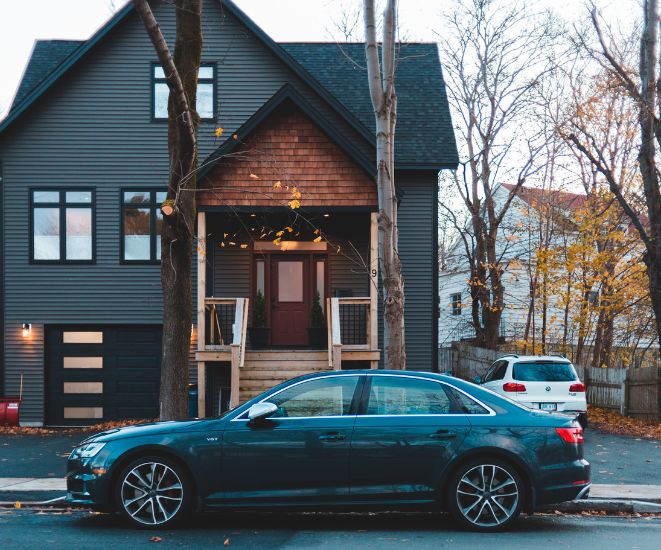Getting Deals on Purchasing Affordable Sedans
In today’s auto market, sedans—once staples of showroom floors—are increasingly treated like the dregs of the inventory: the “leftover” models dealers need to move. Even brands like Audi, BMW, Ford, GM, Kia and Honda are feeling the pressure to shove unsold sedans out the door. For buyers willing to play their cards right, this shift creates a rare opportunity for bargains. Here’s a look behind the scenes, and how you can take advantage to get great deals on affordable sedans.
The Decline of Sedans
1. SUV and Crossover Dominance
Consumer tastes have decisively shifted. SUVs, crossovers and trucks now dominate new car sales, leaving sedans in a shrinking niche. Many Americans see sedans as less versatile or less trendy for families, outdoor lifestyles or perceived safety.
2. Automaker Strategies Pulling Back Sedan Support
Some automakers are actively de-emphasizing sedans. For example, Ford largely stopped promoting its sedan lines in North America (retiring the Fusion, Focus and Taurus) as the company refocused on trucks, SUVs and electrified models.
Luxury marques face a tougher balancing act: sedans remain prestige models, but they face competition from electric SUVs and crossovers. Dealers often end up stuck with mid-level sedan trims that are harder to move.
3. Inventory and Floorplan Pressures
Every car that sits unsold costs the dealership in interest, insurance and space. Sedans that aren’t turning get flagged as liabilities. As new model years arrive, dealers feel mounting urgency to clear out older sedans to make room. This is how models get labeled “leftovers.”
Luxury brands (Audi, BMW) and mainstream ones (GM, Kia, Honda) often receive carry-over incentives or rebates from the factory to help dealers absorb the cost of unsold sedans. Dealers may quietly tuck that margin into discounts or special financing to move them.
4. Layered Discounts and Hidden Premiums
Because there’s less consumer demand, dealers often have to lean harder to make sedans attractive. Options include larger rebates, 0% or low-interest financing, bundled maintenance packages or special lease terms. At the same time, they may try to hide markups or add dealer-only accessories to maintain margins. That tension between discounting and markup is part of the “leftover game.”
Related Search Topics (Ads)
How to Score Deals
If you know how to approach this, you can turn surplus sedan inventory into solid deals. Here’s how:
1. Target Off-peak Times
Buy toward the end of the month, quarter or year. Dealers under pressure to hit quotas are likelier to drop prices. You should also go during slow sales days (weekdays, rainy days) when the dealer needs traffic more than you do.
2. Shop Unpopular Trims, Colors or Features
Leftover sedans often include the less popular color choices, middle trims or features that fewer buyers selected. If you’re flexible on options, you can capture the biggest discounts.
3. Ask About Factory Incentives and Carryover Rebates
Always ask the dealer to break down what they got from the manufacturer for overstock cars. If a large rebate or dealer cash exists, make sure it flows to your bottom line, not just back into dealer profit.
4. Demand Transparency
Ask for the invoice price, add-ons and dealer adjustments. Watch for high “dealer prep,” “market adjustment” or accessory markups that cancel out the discount.
5. Leverage Cross-dealer Competition
Get quotes from multiple dealers for the same leftover sedan. Use one dealer’s offer to negotiate with another. A dealer stuck in a slow region may be willing to undercut to move a car.
6. Look for Demo or Showroom Units
Some leftover sedans are demo cars or showroom use vehicles. They may have low mileage but still qualify for new-car incentives. Always verify warranty terms and inspect for wear.
7. Be Realistic About Resale and Future Demand
Because sedans are falling out of favor, their resale and trade-in value could be weaker than SUVs or electrified models down the line. Make sure your discount is enough to account for that.
What to Look for with Specific Brands
- Audi and BMW. These premium brands often see slow turnover on lower-trim sedans (e.g. base A4, 3 Series variants) when buyers gravitate to SUVs or electric alternatives. Dealers may apply incentives discreetly or stack packages to sweeten the deal.
- Ford. With sedans largely phased out in the U.S., any remaining sedan inventory (or imported ones) often faces deeper cuts or incentives to clear them out.
- GM. While models like the Chevrolet Malibu exist in diminished roles, GM dealers may aggressively discount sedans to shift customers toward SUVs or crossovers.
- Kia. Kia’s sedan lines may still attract budget buyers, but when stock lags, dealers often stack factory rebates and dealer cash to push units.
- Honda. The Civic and Accord still have brand loyalty, but slower sales in many areas mean dealerships may offer loyalty bonuses, financing deals or special pricing to make remaining sedan inventory more compelling.
Save While Shopping
Affordable sedans are often becoming "leftovers" on dealer lots. As consumers gravitate toward SUVs, crossovers and electric vehicles, dealerships face mounting pressure to move unsold sedans or carry financial losses. In response, dealers across brands like Audi, BMW, Ford, GM, Kia and Honda are deploying discounting, incentivizing and creative financing strategies.
For buyers paying attention, this presents a real opportunity. With the right timing, flexibility and negotiation tactics, you can turn what’s unwanted inventory into a bargain. Always dig into the details and avoid hidden markups that might swallow the discount.

